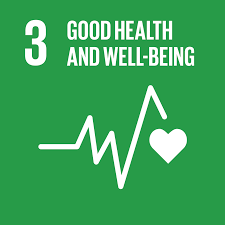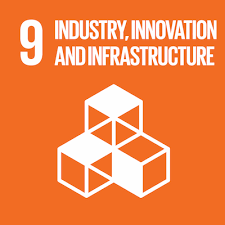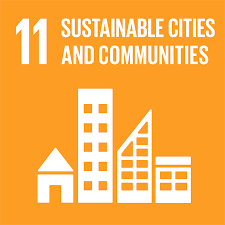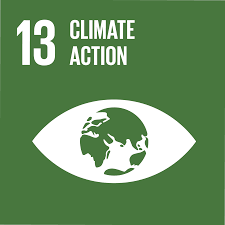Urban Redesigning and Planning to make a Green Planet
- Arushi

- Sep 28, 2020
- 3 min read
This article focuses on the following UN Sustainable Development Goals:
9 out of 10 people in this world breathe highly polluted air (WHO). Air which contributes to 9% of deaths globally. Air which contributes to 15% of deaths in countries of South and East Asia. Air which isn’t a danger just to you or me, but to every living species on this planet which is why it is essential for us to take action against this problem at once.

Thus, I propose the usage of urban planning and redesigning in order to take steps to resolve this issue. By introducing green infrastructure (GI), ensuring that the spatial layout of and usage of infrastructure is environmentally friendly, and prioritising green transportation, we can go a long way in reducing air pollution and avoiding climate change in urban cities.
By introducing GI, I am proposing the incorporation of vegetation into urban landscapes. Some examples of GI are planting more trees near streets and parks, using more green walls and greens roofs. This solution will not only help the cities reduce their carbon emissions, but also will make the infrastructure more environment friendly. .
By regulating the spatial layout of the infrastructure, I am proposing the placement of essential centers and buildings close to residential areas and properties, in order to decrease mobility. By reducing the usage of vehicles used on a daily basis, one can help reduce carbon emissions. Buildings should also be used as multipurpose properties, in order to save space. For example, in Paris, several school gyms act as public gyms in the night time (“Will this be the First European City to Ban Cars?”). This way, one can avoid the creation and construction of extra buildings which would take up time, resources, and damage the environment. Lastly, cities should aim for vertical development instead of horizontal development, for the same reasons mentioned above.
The last solution I propose is to change the mobility systems in urban cities. Cities should prioritize pedestrians, then bikes, then public transports and lastly, private vehicles. This is another solution used in Paris which has resulted in a less polluted environment.
“WHO estimates that around 7 million people die every year from exposure to polluted air.”
These solutions help tackle the United Nations’ Sustainable Development Goals 3 (Good Health and Wellbeing), 9 (Industry, Innovation and Infrastructure), 11 (Sustainable Cities and Communities) and 13 (Climate Action).
The reduction of carbon emissions will result in purer air, therefore affect the physical and mental health of citizens in a positive manner. Moreover, the increase in walking and biking will act as exercise for citizens.
Innovation will be achieved through new concepts of including GI and innovative techniques in order to determine the optimal spatial layout for the infrastructure. Environmentally friendly infrastructure will be a step closer to a sustainable community.
Not only will these solutions make cities and communities more environmentally stable and sustainable, they will also make the places safer. By having more close-knit communities, security will be guaranteed.
Finally, the reduction of carbon emissions will improve the air quality, henceforth reducing global warming and avoiding climate change.
“Ambient air pollution alone caused some 4.2 million deaths in 2016, while household air pollution from cooking with polluting fuels and technologies caused an estimated 3.8 million deaths in the same period,” (“Air Pollution”).
Overall, it is essential that urban cities and communities take this solution of urban planning and redesigning by introducing green infrastructure (GI), ensuring that the spatial layout of and usage of infrastructure is environmentally friendly and prioritising green transportation, into consideration because they can help reach the United Nations’ Sustainable Development Goals 3 (Good Health and Wellbeing), 9 (Industry, Innovation and Infrastructure), 11 (Sustainable Cities and Communities) and 13 (Climate Action). By taking this into consideration, we, as a global community, will take a step further to a better and a sustainable world.
Remember, change starts with you.
External Resources
Click here to learn more about the initiatives that Paris has taken regarding climate change.
View this link to learn more about air pollution globally.
This site will tell you about how greener impacts your health.
Bibliography
“Air Pollution.” World Health Organization, World Health Organization, n.d., www.who.int/news-room/air-pollution. Accessed 26 Sept. 2020.
KV. Abhijith, P. Kumar, et al. “Using Green Infrastructure to Improve Urban Air Quality.” Ambio, n.d., link.springer.com/article/10.1007/s13280-019-01164-3. Accessed 26 Sept. 2020.
“Reducing Air Pollution through Urban Design.” Gehl, gehlpeople.com/projects/air-quality-copenhagen/. Accessed 26 Sept. 2020.
Roser, Max. “Air Pollution.” Our World in Data, 17 Apr. 2017, ourworldindata.org/air-pollution. Accessed 26 Sept. 2020.
“How Greenery Impacts Your Health.” India News, 15 July 2019, www.india.com/lifestyle/how-greenery-impacts-your-health-3717657/. Accessed 26 Sept. 2020.
“Will This Be the First European City to Ban Cars?” BBC Reel, BBC, www.bbc.com/reel/video/p08n2hwl/will-this-be-the-first-european-city-to-ban-cars-. Accessed 26 Sept. 2020.








Comments